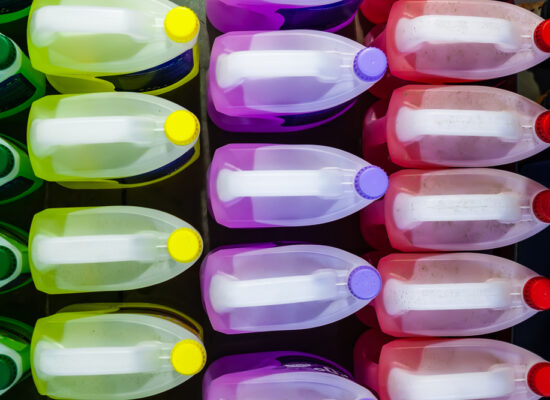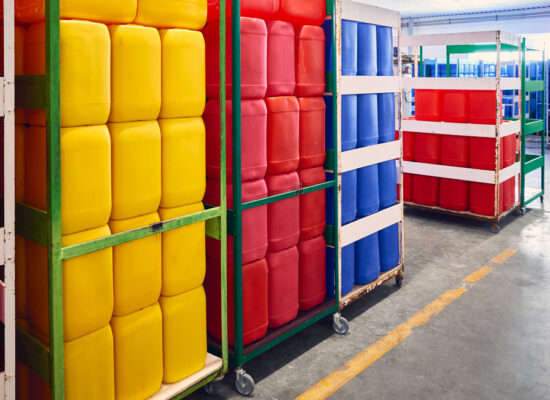Jerrycan
The Jerrican’s History
The jerrican, which Hitler secretly stored in preparation for war, was the key item in the technological struggle during World War II that the Allied Forces first disregarded.
An effective container for transporting fuel is a jerrican or jerry can. Due to its success during World War II, the Germans were able to quickly invade most of Europe using their infamous Blitzkrieg tactic.
Jerricans continue to be the safest method for securely transporting both hazardous and non-hazardous liquids more than fifty years later, and they even continue to adhere to rules and regulations established after the war, such as those related to the International Air Transport Association (IATA) and International Maritime Dangerous Goods (IMDG) Code.
Original German Creation
The Germans, who were on the verge of starting World War II, knew the changing fuel requirements of heavy battle and swift movement in mechanized warfare. They therefore came up with their lightning-quick Blitzkrieg tactic, using what they named the “Wehrmacht-Einheitskanister” (literally, “armed forces unit canister”). The Germans were able to increase their supply routes and outmaneuver the Allied forces because to this unassuming container.
Because “jerry” was slang for Germans at the time, the Allies termed the cans “jerry cans.”
In comparison to earlier fuel transport containers, the jerrican had a few crucial advantages:
– Because of its narrow nozzle, fuel may be poured without a funnel, can opener, or other accessories. This decreased leakage and enabled for quick and effective refilling during combat.
– The mouth of the container was made leak-proof by a gasket that was built into the container.
– The inside of every jerrican was coated with an impermeable plastic shell to stop leaks and preserve the can, which is possibly the most significant feature.
These adjustments, along with a few others, reduced fuel waste and sped up delivery.
The trip that the jerrican took to land in America:
A German coworker and an American engineer called Paul Pleiss planned to travel by car across Europe and then to India in the summer of 1939. The German engineer sneakily took three jerricans from the Tempelhof Airport and mounted them beneath their automobile since the two needed a way to travel with an emergency water supply.
Surprisingly, they traveled without issue across 11 different nations. The German engineer’s skills were then required by Field Marshal Goering halfway through India, forcing Paul’s companion to take a flight home.
Pleiss realized he had something that may significantly aid the Allied war effort as conflict grew closer. Pleiss soon boarded a plane bound for the United States after parking the automobile. However, the lack of a sample generated little enthusiasm for the concept when he told military officials about the container’s effectiveness.
Pleiss made the brave decision to ship his entire car from Calcutta in order to obtain the sample he so sorely needed but was unable to risk shipping the jerricans by themselves. Unfortunately, the War Department decided a modified WWI container would be adequate when he finally sent a jerrican sample to Washington, D.C.
British jerricans start to be produced in volume:
As a result of the German invasion of Norway in 1940, the British were the first member of the Allies to recognize the significance of the jerrican. When Pleiss visited London, British officers got in touch with him to ask about the jerrican’s design as a result.
Pleiss hurriedly sent one of his jerrican samples from the US to London, where the British got to work creating a model that was exactly the same. The jerricans didn’t, however, go into large manufacture until 1942.
All jerricans used in combat by the Allied Forces were originally ordered to be manufactured by the British; however, as demand grew, the U.S. was eventually compelled to join the British in production.
To help the Allied forces advance by 1944, Jerricans moved more than a million gallons of fuel every day.
How jerricans are used today
The military continues to use jerricans extensively because NATO-affiliated nations’ armies still use the World War II design for moving liquids.
Additionally, the government and commercial industry are storing a growing number of materials in jerricans because they offer exceptionally secure vessels for potentially toxic liquids—especially when transportation is required.
Because jerricans offer such high levels of protection, businesses that are required to protect liquids during shipment and storage utilize them. For storing chemicals and gasoline, many homes utilize jerricans. Jerricans even provide a tight container for delivering water to people in areas with a lack of water.
Plastic
High-density polyethylene (HDPE) jerricans made of plastic offer a more lightweight and affordable alternative while yet guaranteeing the same level of safety for transporting dangerous goods. Because it maintains its resistance to liquid absorption, even when exposed to substances that are extremely corrosive such acid and aldehydes, high-density polyethylene makes the best kind of container.
It is crucial to check the contents of jerricans without actually looking at the liquid within because modern jerricans now carry a greater variety of potentially dangerous substances. A color-coded system has also been devised to distinguish between different kinds of liquid contents.
Using recycled jerricans
When military troop and vehicle movements peaked in October 1944 during World War II, an astounding 3.5 million Jerricans were declared dead.
The U.S. even offered awards to French kids for the collecting of used, empty jerricans because the issue had reached such epidemic proportions. On this method, almost a million cans were collected.
Today’s jerrican producers have made it considerably simpler to recycle the containers, with many adopting recyclable packaging. High-density polyethylene is still one of the simplest plastics to recycle, and most recycling facilities will accept jerricans as long as they are uncontaminated. You can take a jerrican to a household hazardous waste drop-off if it contained dangerous substances.
A plastic jerry can is a durable container made to hold small amounts of liquids like fuel safely and securely.
What Purposes Do Plastic Jerry Cans Serve Best?
A durable industrial storage container that works well for liquid storage is the plastic jerry can. The plastic jerry can may be carried by hand and is frequently used in both personal and industrial capacities since it is made in quantities up to 25 liters and has a useful handle. Although the plastic jerry can works great for storing fuel, it may also be used to store a variety of other liquids.
What Fluids Can Be Stored in a Jerry Can Made of Plastic?
The traditional jerry can was initially designed to hold fuel, including various kinds of gasoline and diesel. The plastic jerry can still serves this purpose today, but it can also be used to safely store a wide variety of different liquids.
These liquids consist of:
Gasoline, diesel fuel, water, and chemicals (including cleaning agents), solvents, pharmaceuticals
Always be sure the liquid you are storing can be kept inside HDPE containers without risking a plastic reaction.
Product Sizes on Offer
The largest capacity that is currently offered is 25 litres, but laws and regulations may have restrictions on how much fuel or other liquids can be kept in a single jerry can.
Available product sizes include:
With top, 5-liter plastic jerry can
20-liter plastic jerry can with a lid (UN)
UN-approved 25-liter plastic jerry can
Benefits of Using a Plastic Jerry Can
When used to store liquids, plastic jerry cans have a number of significant advantages. A plastic jerry can can be reused repeatedly in addition to being adaptable and non-reactive (just ensure the product is thoroughly cleaned and disinfected after each use).
The following are the main advantages:
- UN endorsed
- both recyclable and reusable
- can hold a variety of liquids
- Produced from HDPE Robust and durable
- Durable Cost-effective






© Arbemu. All rights reserved